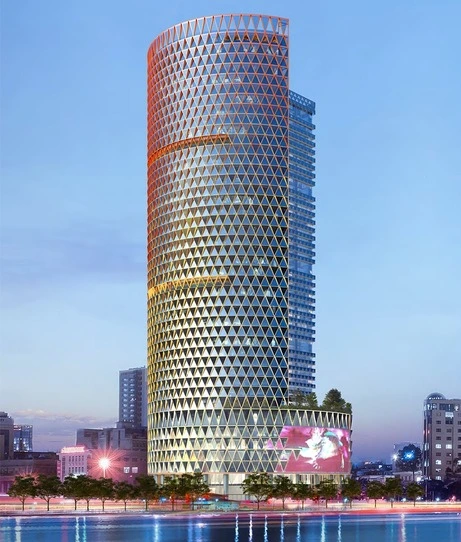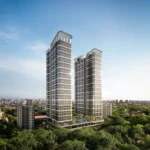After finishing a one-week real estate scouting trip in Cambodia (check out the details in my previous post), I jumped straight into my next destination—Ho Chi Minh City. Filled with excitement and a touch of nervousness, I set out to see if I could uncover a perfect real estate opportunity that could offer:
- A minimum 10% rental yield with capital appreciation of at least 10% per year, or
- Potential to double or triple my initial investment within five years.
However, my on-the-ground experience quickly showed that Ho Chi Minh’s real estate market required a more cautious approach. Despite my prior research, navigating the city’s market felt like searching for a needle in a haystack due to limited transparency in market information. (For more on my initial market research, see my post on the Vietnam Real Estate Market 2024)
Key Takeaways from My First Week in Ho Chi Minh
After a week of scouting various districts, particularly Thu Duc City (formerly Districts 2 and 9), I realized my initial plans needed a serious reality check. Two major insights emerged:
1. Rethinking Land and Off-Plan Projects: Initially, I planned to invest in land or off-plan projects, inspired by stories of “magical returns” in these areas. However, the complexity and risks I encountered led me to shift my focus toward completed properties in prime locations.
2. Budget Reality Check: I arrived with a maximum budget of $175K USD, but soon discovered the market was pricier than anticipated. To secure a quality, finished property in a desirable location with reputable developers and solid amenities, I would need at least $275K USD (around 6.8 billion VND).
Why I Chose Not to Invest in Land
1. High Risk in an Unfamiliar Market
Without deep knowledge of Ho Chi Minh City’s land potential and the complex regulations around land ownership, I quickly realized that land investment here would be high-stakes. While there’s talk of the incredible gains that can be made, I feared the equally real possibility of loss, especially if I misstepped. Vietnam’s laws regarding foreign ownership add another layer of complexity, making land acquisition feel more like a gamble than a calculated investment.
Additionally, in my Vietnam Real Estate Market 2024 post, I mentioned how land investments often attract scams at every stage. As someone unfamiliar with the local market, I knew I could be an easy target for skilled scammers. Despite this, curiosity drove me to visit various land plots across different areas. As I had predicted, the limited knowledge about the market made me see every piece of land I visited as either too remote, lacking basic infrastructure, or simply too far from the city center to justify serious consideration.
With only two weeks to explore, I knew I didn’t have enough time to fully understand the land market and make a confident, informed decision, that’s why I decided to ditch it.
2. Land Prices Beyond My Budget
Another reason I veered away from land was the cost. Had plots been priced between $10K–$50K USD, I might have considered parking some money for long-term appreciation. However, most land in Ho Chi Minh starts at $100K, with some plots reaching as high as $350K. Considering the lengthy timelines for appreciation and the inherent risks, I felt the investment wasn’t justified. Many investors may find success with land, but I wasn’t comfortable with such a high-stakes move given my limited market knowledge.

Why I Chose Not to Invest in Off-plan Projects
1. No Project Met My Criteria
Surprisingly, none of the off-plan or ongoing projects I visited met my investment criteria. Reputable developers’ off-plan projects were more expensive than completed ones. Paying a premium to wait several years for a finished apartment didn’t make sense when I could find similar or lower prices for completed properties that would start generating rental income immediately.
2. Frequent Delays and Legal Risks
Off-plan projects in Vietnam often face delays, financial setbacks, or even legal complications, sometimes resulting in unfinished buildings. After witnessing some of these challenges and observing how some developments quickly declined in quality after completion, I leaned toward completed properties, where I could thoroughly inspect the building quality, maintenance standards, neighborhood, and apartment finishes. (For more details on the complexities of investing in ongoing projects, check out my Vietnam Real Estate Market 2024 post.)
Below are a few examples of how buildings remain unfinished, despite their prime locations in the bustling heart of the city:
One Central HCM
This ambitious project has navigated multiple owners and name changes over the years. Yet, during my visit in September, the concrete shell still loomed ominously over Ben Thanh Market—the most touristy and frequented spot in the city.

IFC One Saigon
This tower has been a “ghost tower” for over a decade, remaining unfinished even though it sits right in the city’s core. Every night, as I ran along the scenic Saigon River, I couldn’t help but gaze at it, feeling a mix of disappointment and hope. It’s hard not to wish that the government would step in and allow a company to take over, breathing new life into this remarkable structure and transforming it into the icon it was meant to be.

The Budget Reality Check
One of the most surprising aspects of my trip was the gap between my budget and the actual market prices. I entered Ho Chi Minh City with $175K USD, hoping it would be enough for a solid investment. But after touring multiple developments, I found that meeting my standards would require at least $275K USD.
This price point allowed access to well-maintained properties in good locations with reputable developers, plus high-quality amenities like parks, gyms, pools, and nearby retail. The higher costs reflect the increasing demand for finished properties in key areas. For instance, mid-range apartments now average over $2,500 USD per sqm, while high-end properties in central districts range from $4,000 to $6,000 USD per sqm.
Investment Justification at $275K
Unfortunately, a $275K USD budget wasn’t enough to target prime areas in first-tier districts like District 1 or the popular Thu Thiem in District 2. Instead, this amount could secure a one- or two-bedroom apartment in second- or third-tier locations like the outer parts of District 2 or District 7. Pricing in these areas varies based on factors like floor level, view, and property condition. This budget level granted access to neighborhoods appealing to young professionals and expats, but central districts proved out of reach for my investment criteria.
Is a $275K Investment Worth It?
Originally, I aimed to list a property on Airbnb for short-term rentals. However, new regulations are restricting or banning short-term rentals in some developments, similar to cities like Barcelona and Madrid. When I booked a luxury condo via Booking.com, I encountered these restrictions firsthand when I was denied access to amenities like the gym and pool, underscoring the tightening rules.
For long-term rentals, the numbers are similarly unappealing. I found that rental prices typically range from 18 to 23 million VND ($700–$950) per month. Assuming full occupancy, this would yield a gross rental income of $8,400–$11,400 annually. After deducting management fees (10%) and taxes (10%), the net income drops to $6,720–$9,120, translating to a yield of approximately 2.44%–3.32%.
This yield range is very low compared to my other investment options. While property values in Vietnam are expected to appreciate (forecasted at 5–7% annual growth in Ho Chi Minh City), the low rental yields make it hard to justify this investment.

Is Now the Right Time to Invest in Vietnam, especially Ho Chi Minh City?
I believe there’s always a right time to invest as long as you find the right opportunity that aligns with your criteria. For some, now may not be the ideal moment, but for others, it could very well be the best time. Real estate markets fluctuate, but opportunities are always there if you’re prepared.
As for my own experience, I didn’t find anything that matched my criteria; the numbers just didn’t justify my investment goals. However, that doesn’t mean the market lacks potential. After seeing it firsthand, I’m more interested in investing in Vietnam than ever. The country’s booming economy, improved infrastructure, and openness to development are incredibly exciting to watch.
It’s also fair to say that two weeks is far too little time to explore a city as vast as Ho Chi Minh. Viewing the city through an investor’s lens was a new experience for me, and I took my time to understand it rather than rush into decisions.
Upon reflection, I realized two big mistakes in my approach to investing in Vietnam:
*Delusional Thinking: I opted for the easiest and most convenient path, one that many local and foreign investors follow, expecting miraculous returns—hoping to double or triple my money in just a few years. Most high-end condos in Ho Chi Minh City are already priced high and seen as “safe” investments, so it’s no surprise they’re in demand. The real issue? There’s almost no room to add value or increase the price unless the market experiences a significant surge. And with hundreds of similar units in the same building offering exactly the same thing, expecting extraordinary returns was wishful thinking.
*Avoiding the Real Work: The real potential for significant growth lies in riskier and harder ventures—investing in land or off-plan projects. These opportunities are fraught with risks, complexities, and challenges, but that’s precisely where the big rewards come from. Yet, I dismissed these options immediately. With only two weeks at my disposal, I gravitated towards easier, less complex investments. I wasn’t prepared to roll up my sleeves, put in the hard work, or tackle the more difficult path, but still expected big returns.
Surprise! Surprise! Reports released by the Vietnamese government in 2024 indicate that land in Ho Chi Minh City has increased by 3 to 38 times in specific districts and even up to 51 times in some cases. For instance, areas such as District 1, District 4, District 8, and District 12 have seen steep hikes due to growing urban demand (Source: Xe.today). This impressive rise confirms that achieving my goals of doubling or tripling investment here is possible—provided I thoroughly understand the market and choose the right investment strategy.

My Personal Conclusion
After six months of research and two weeks of scouting in Ho Chi Minh City, I reaffirm my belief: investing in Vietnam is not for the faint-hearted. It demands determination, resilience, and the ability to navigate countless challenges. From legal hurdles to the ever-present risk of fraud, investing here is riddled with obstacles. But if you get it right, the rewards can be substantial—returns of 3-5 times your initial investment are possible, which is rare in most parts of the world.
Lessons for My Next Trip to Vietnam
When I return next year, I’ll spend at least a month exploring opportunities in Ho Chi Minh City. More importantly, I’ll change my approach, willing to get my hands dirty and not shy away from the more challenging, less convenient investments.
The old saying, “Nothing great comes easy,” applies perfectly to investing. While you may occasionally stumble upon a great deal, consistent success requires a formula: time, effort, and resources. You need at least two of these to secure a great investment.
Hopefully, the next time I visit, I’ll be able to report back with an excellent purchase. Stay tuned for my update in 2025!
Related posts:
 How to Invest in Cambodian Real Estate as a Foreigner: My Personal Experience as a European Investor
How to Invest in Cambodian Real Estate as a Foreigner: My Personal Experience as a European Investor
 Vietnam Real Estate Market 2025: Why Ho Chi Minh City is the Best Investment Hotspot for Foreign Buyers
Vietnam Real Estate Market 2025: Why Ho Chi Minh City is the Best Investment Hotspot for Foreign Buyers
 Vietnam Real Estate Investment 2025: Critical Risks, New Regulations & Insider Tips for Foreign Investors
Vietnam Real Estate Investment 2025: Critical Risks, New Regulations & Insider Tips for Foreign Investors
 Offshore Companies & Tax Evasion (6 Chapters)
Offshore Companies & Tax Evasion (6 Chapters)
 How to Start Investing in Crypto with Just $1: A Beginner’s Guide
How to Start Investing in Crypto with Just $1: A Beginner’s Guide
 Nairobi Real Estate Investment 2025: How I Bought 2 High-ROI Apartments for Under $150K
Nairobi Real Estate Investment 2025: How I Bought 2 High-ROI Apartments for Under $150K

